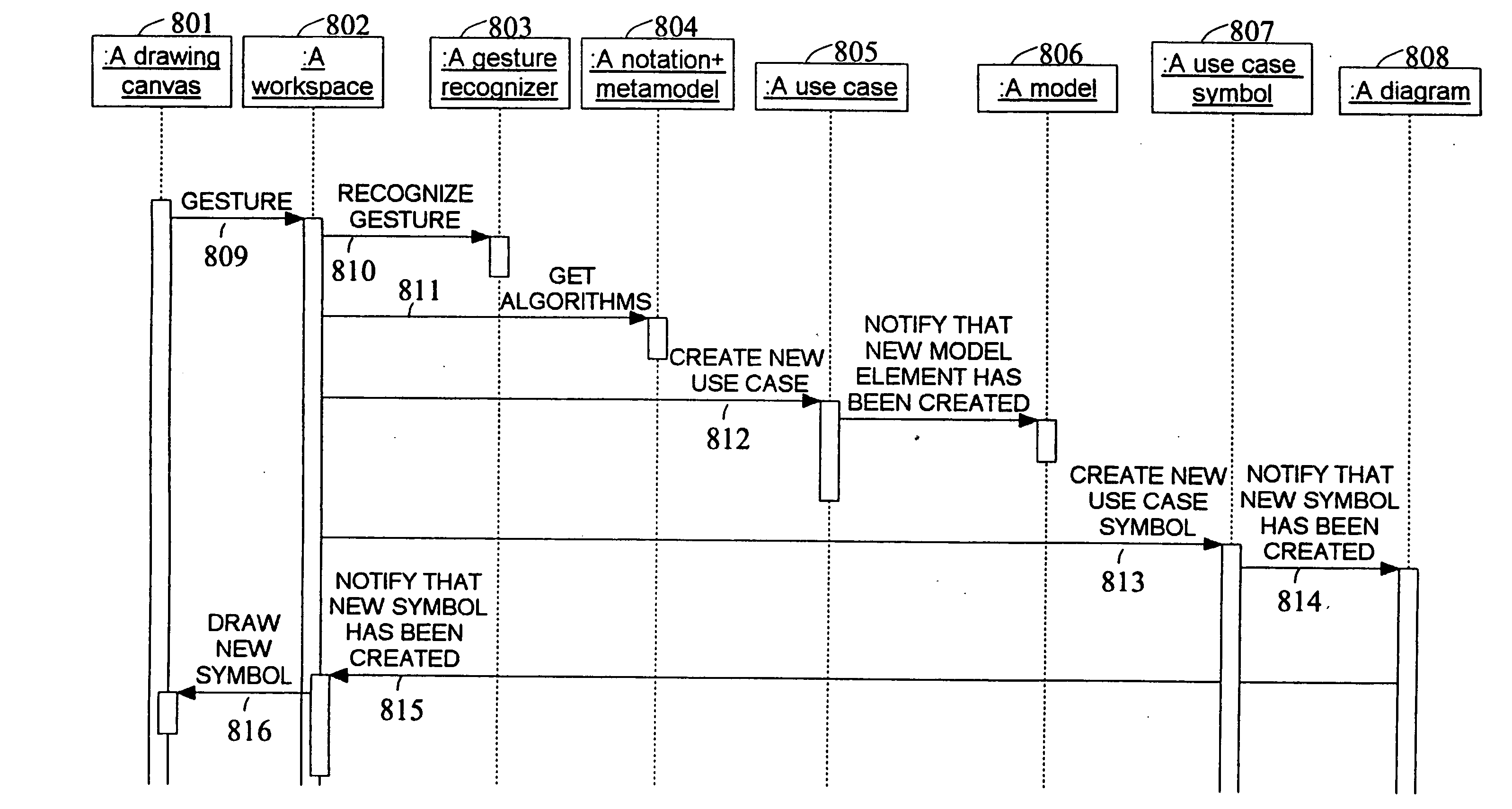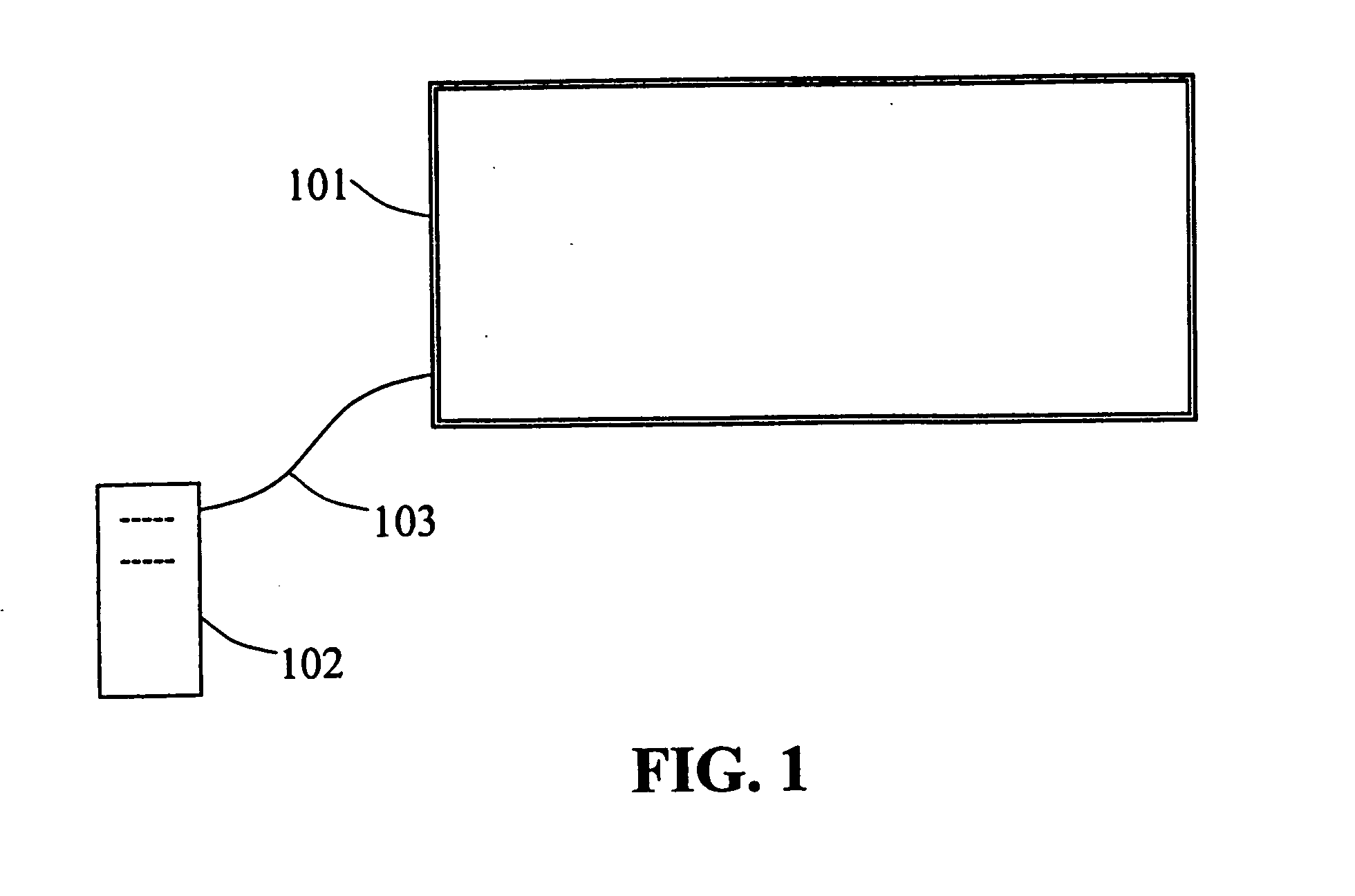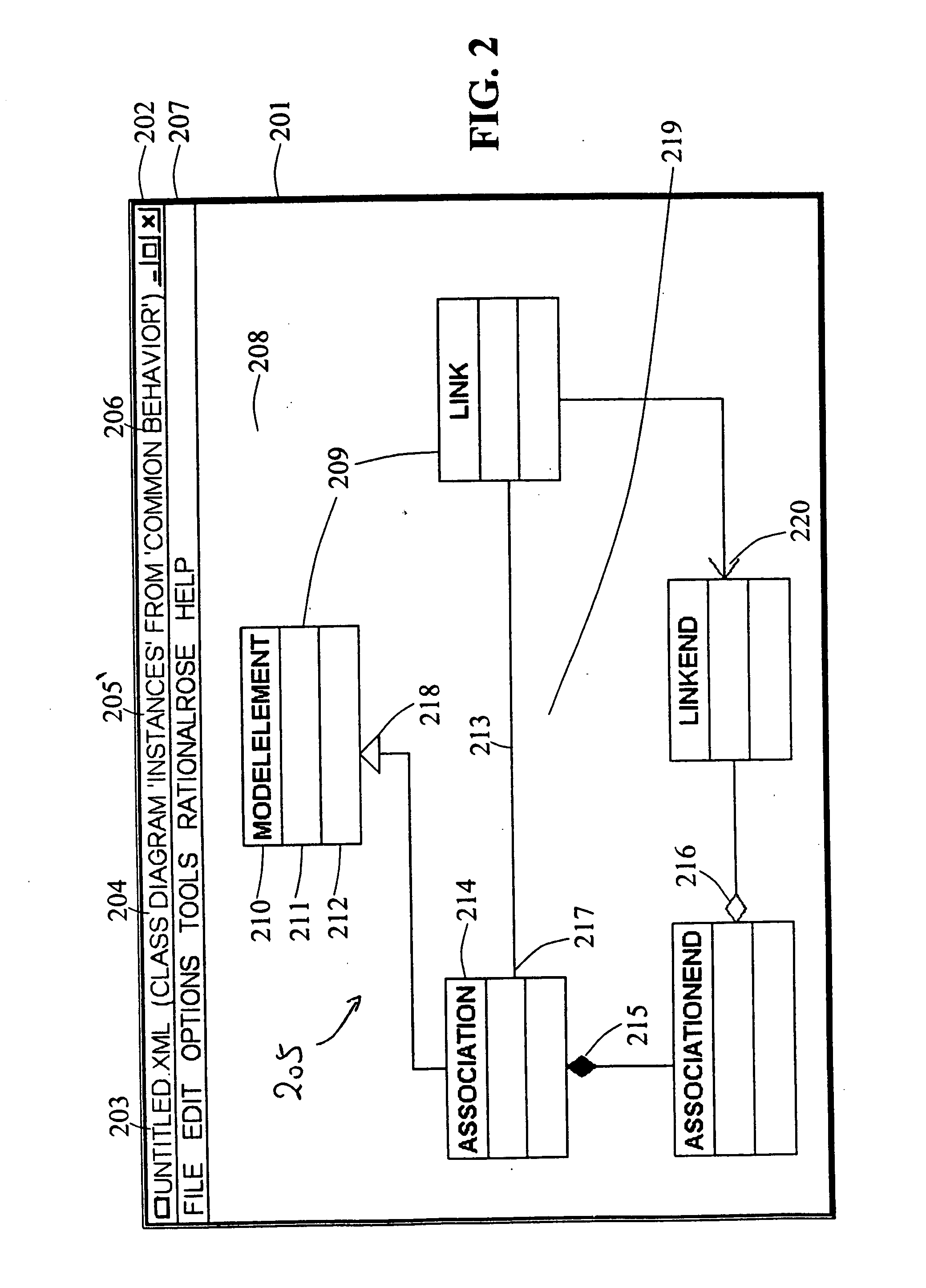Method for gesture based modeling
a gesture and modeling technology, applied in the field of gesture based modeling, can solve the problems of not being able to understand the referent system nor building a model system, and not being able to solve the problems of not being able to use whiteboards widely and frequently,
- Summary
- Abstract
- Description
- Claims
- Application Information
AI Technical Summary
Problems solved by technology
Method used
Image
Examples
Embodiment Construction
[0018] This purpose is achieved by a method for gesture based modeling comprising
[0019] a predetermined metamodel for a model including a number of general elements and possible relations between these general elements,
[0020] a number of predetermined genera gestures, each general gesture linked to at least one general algorithm,
[0021] reading of an input gesture,
[0022] comparing said input gesture with said number of predetermined general gestures, identifying at least one specific gesture among said predetermined general gestures as resembling said input gesture,
[0023] assigning among said at least one general algorithm, a specific algorithm to said specific gesture,
[0024] determining the allowance of said specific algorithm according to said metamodel and model and, in case of allowance,
[0025] upon request as a response to said specific gesture modifying said model in accordance with said specific algorithm,
[0026] upon request modifying a diagram representing said model on an out...
PUM
 Login to View More
Login to View More Abstract
Description
Claims
Application Information
 Login to View More
Login to View More - R&D
- Intellectual Property
- Life Sciences
- Materials
- Tech Scout
- Unparalleled Data Quality
- Higher Quality Content
- 60% Fewer Hallucinations
Browse by: Latest US Patents, China's latest patents, Technical Efficacy Thesaurus, Application Domain, Technology Topic, Popular Technical Reports.
© 2025 PatSnap. All rights reserved.Legal|Privacy policy|Modern Slavery Act Transparency Statement|Sitemap|About US| Contact US: help@patsnap.com



